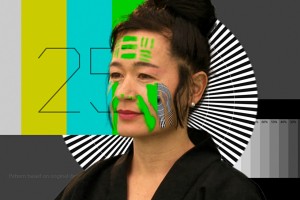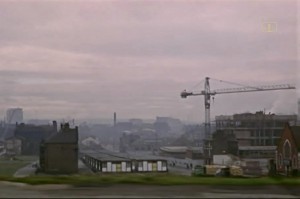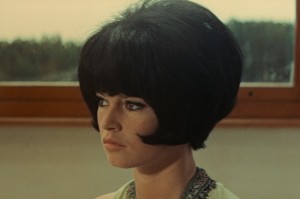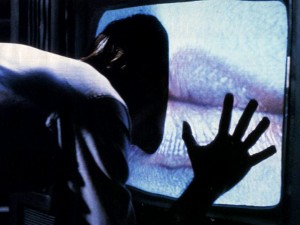Adapting The Way We Watch Film: ICA Artists’ Moving Image Network
Where is the best place to watch artists’ film? Josie Sommer explores the ICA’s Artists’ Film Club on tour and finds herself wondering whether we need an entirely new space outside of the cinema or gallery…
“Empty your mind. Be formless, shapeless — like water. Now, you put water into a cup, it becomes the cup. Put water in a bottle, it becomes the bottle… Be water, my friend.”
So speaks a rather enigmatic Bruce Lee in the opening of artist Hito Steyerl’s Liquidity Inc. (2014). Spanning half an hour, Liquidity Inc. is the first of three films by Steyerl, shown as part of the ICA Artists’ Moving Image Network series at Cornerhouse, Manchester. And, unfortunately for Bruce, the Network demonstrates that not everything can adapt like water.
The ICA Artists’ Moving Image Network was created by Steven Cairns, Associate Curator of Artists’ Film and Moving Image at ICA, London. Devised around the ICA’s own exhibition agenda and Artists’ Film Club (running since 2008), this programme of monthly and bi-monthly screenings of international artist film throughout 2014 has been transmitted to four provincial galleries — Turner Contemporary, Margate, MK Gallery, Milton Keynes, Tramway, Glasgow and Cornerhouse – creating the eponymous national network.
Beginning with Laure Prouvost in February, the series has so far included the work of Aurélien Froment and Keren Cytter, as well as two screenings of film-works by a mixture of artists which address the same themes: Colour and 21st Century Pop. The screenings are punctuated by various artists’ Q&A sessions at the galleries involved, and have proved to be popular with audiences.
Cornerhouse has a well-established relationship with video art; its exhibitions normally give artists’ film a good airing. Sarah Perks, Director of Visual Arts and Film at Cornerhouse, when asked about the Network, said: “I think it’s exciting. We’re providing more opportunities for audiences to see artists’ film and to engage with it in different ways.”
So, here I am in Manchester waiting for this afternoon’s screening. Outside, the much-anticipated torrential rain left over from Hurricane Bertha looks like it’s just hit the North, flooding the ground floor of Cornerhouse with wet people relieved to find shelter and a place to discard cagoules.
As I venture downstairs to Cinema 2, passing a busy screen showing a non-art film on my way, I ask the attendant how popular the programme has been so far. “It varies,” she tells me, commenting that the expected crowd for today is around forty. That’s pretty impressive, I’d say.
Settling into my seat, I glance twice at the Yorkie in my bag – is it acceptable to eat during an art film screening? I decide no, but why? Is this the same as being in a normal cinema?

Asking Sarah Perks her thoughts on the change of context, she commented on the tradition of making black boxes in gallery spaces to provide a space of concentration for artists’ film. Prior to the screening, I thought that moving artists’ film from the gallery space to that of a cinema might alter the work, or that it might act to put the films through an additional process. But watching these films, I think it’s the environment that is altered. The cinema space has changed, and for all its natural comfort seems suddenly unfamiliar.
Rather than my feeling of excitement mixed with relaxation that usually washes over me at the cinema, viewing art films here feels like waiting for a lecture. You wind any fidgeting and chatter down to make room for the thinking and concentration you feel fast approaching. The atmosphere is different – it feels like a gallery – and I’m not really sure why, but it seems a regretful imposition.
Lecture in session, and first up, there’s Liquidity Inc., with which you’re already briefly acquainted. Hito Steyerl’s film is a mixture of virtual and pseudo-documentary, using the central figure of Jacob Wood, a financial advisor made redundant in the last financial crisis, who becomes a mixed martial arts commentator (hence the Bruce Lee adapting mantra). Steyerl mixes footage, both found and original, with screenshots of computer programmes creating displaced animated water. There are multiple screens, as shots are superimposed into TVs and iPhones; the added dimensions of technology making the cinema setting seem more and more irrelevant to its content.
Next up, How Not To Be Seen. A Fucking Didactic Educational .Mov File (2013). This 14-minute film gives humorous yet poignant direction on how to become invisible in the digital age, using historical technological reference points such as key dates of resolution and pixel measurement development. Steyerl’s instructions give leave for the virtual to become real and vice versa; “animators hold vectors to keep images together and re-emerge as pixels”.
Lastly, in the entire 28 seconds of Strike! (2010), Steyerl takes a hammer and chisel to a TV, summoning the appearance of a brightly coloured digital image on the screen rather than causing any physical damage.
Watching Steyerl’s work, I can’t help but note the irony of Bruce Lee’s repeated speech in Liquidity Inc. within the wider Artists’ Moving Image Network. The water-fluidity of adapting to situations and environments just isn’t there; artists’ films haven’t seamlessly been poured into cinema, and the cinema doesn’t feel like the right container for the films. The cinema space is rooted in its own rather modernist tradition that doesn’t necessarily fit or translate into the language of contemporary artists’ film, especially with regards to Steyerl’s technology-driven sociological studies. It feels out of touch, and you can’t help wonder why this ‘network’ isn’t made into some sort of more ambitious, collective online event?
At 45 minutes long, this screening is one of the shortest the programme has seen, and at lights up I look around disappointedly to find there are only six others in the audience.
Although the ICA and all of these galleries are, commendably, promoting this placement of artists’ film in cinema as an innovative and engaging experiment, it seems almost retrograde in the sense that it boxes art films into the cinema, and strips the cinema of what it is — a space that is desirable to be in.
This isn’t a one-off; with art film events becoming a staple at many galleries — such as GENERATION at Tramway, and Cornerhouse’s Artist Film programme — audiences will be able to access contemporary art on screen long after the ICA’s Network has come to a close this Autumn.
But maybe the curators would benefit from trying to adapt or cultivate a new space which might fit some of these screenings better; somewhere that would enhance and continue their themes beyond the screen. Be water, my friend.
Josie Sommer
This article has been specially commissioned for The Double Negative by Liverpool John Moores University and Arts Council England. Part of the collaborative #BeACritic campaign — see more here
More on Hito Steyerl’s exhibition at ICA, London here
Catch the next ICA Artists’ Moving Image Network screenings near you: Bouchra Khalili at ICA, London, this Saturday 16 August 2014, 6.45pm, £5; Hito Steyerl at Turner Contemporary, Margate, Saturday 30 August 2014, 2.30pm, £5; and Agnieszka Polska at Cornerhouse, Manchester, Tuesday 23 September 2014, 6.20pm, £6






